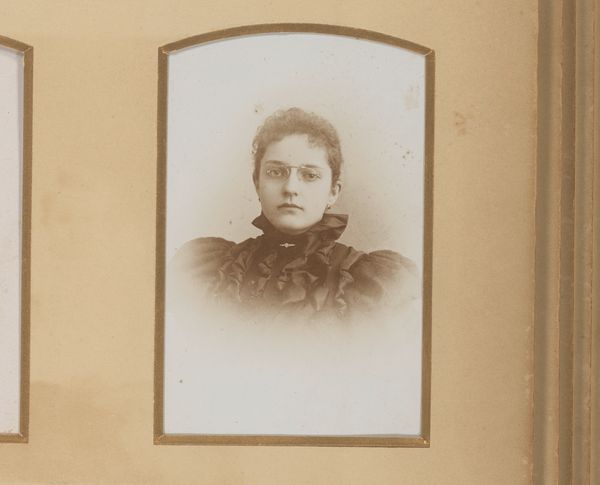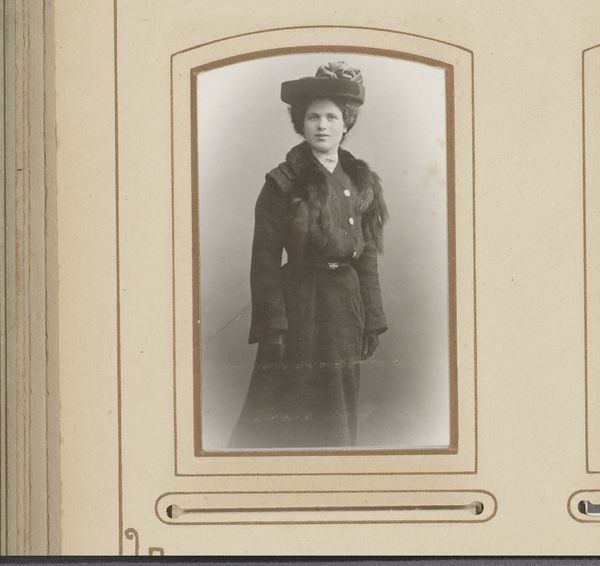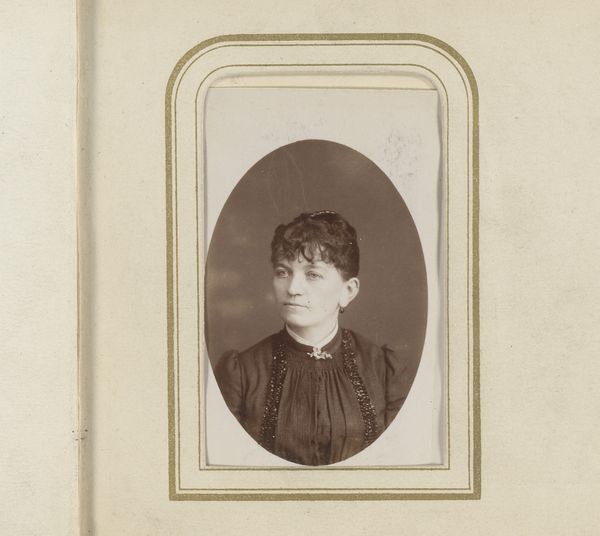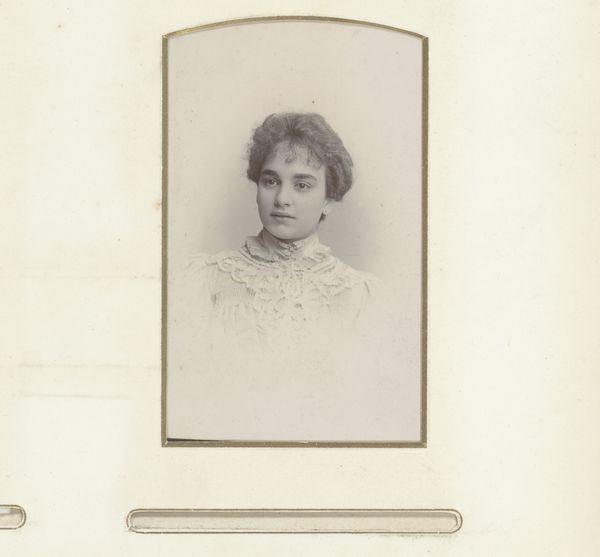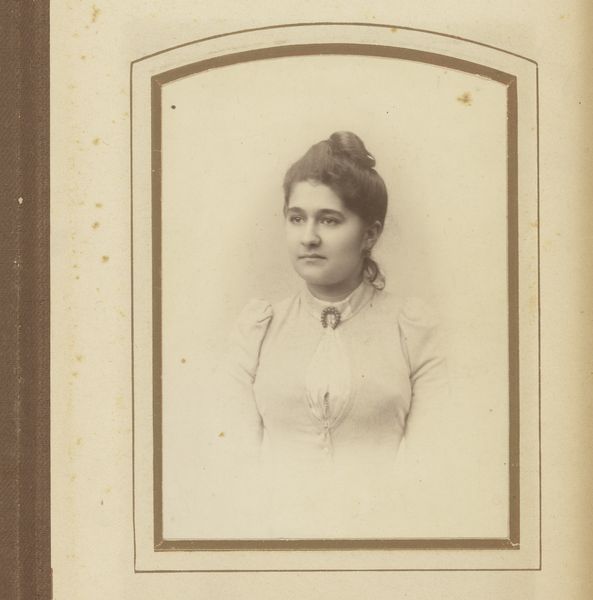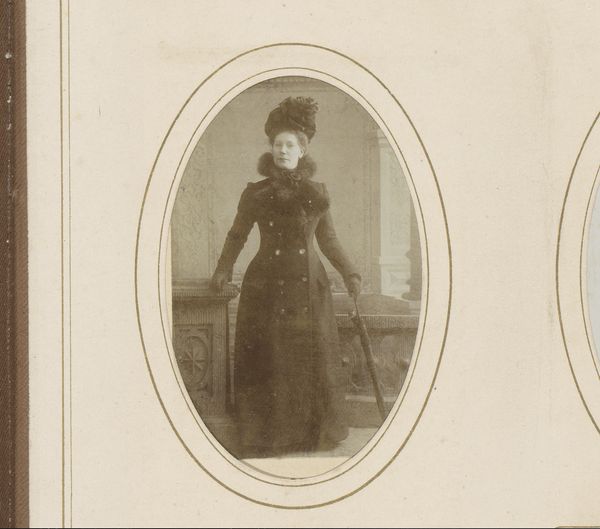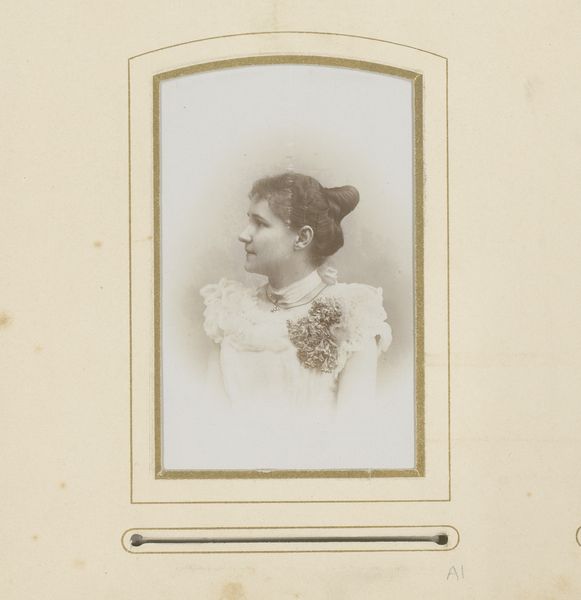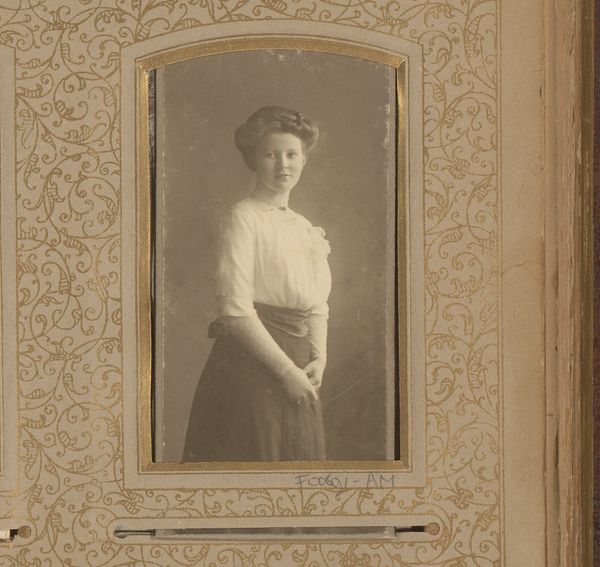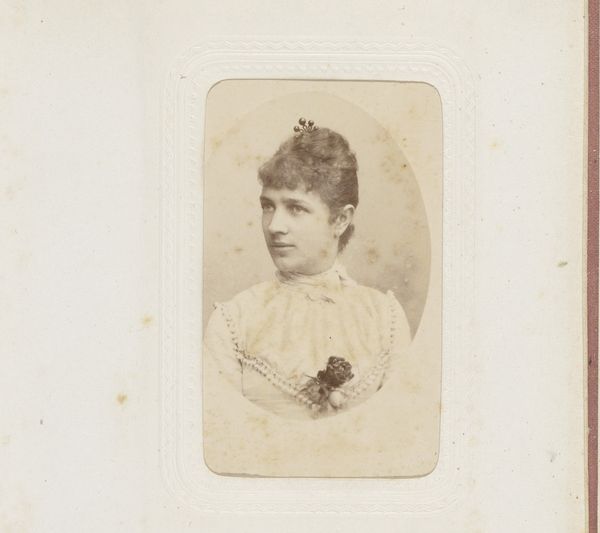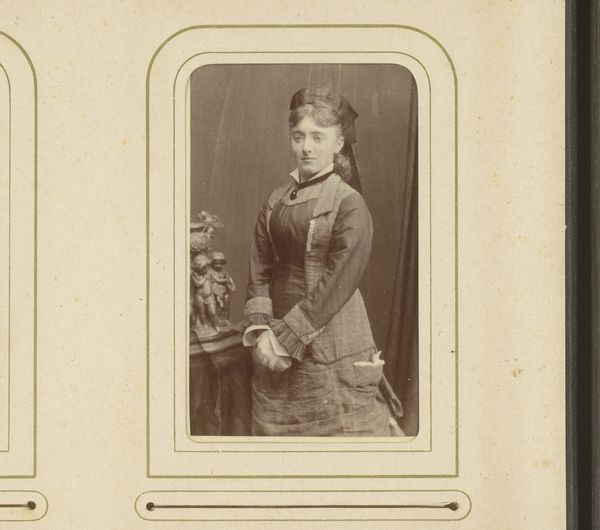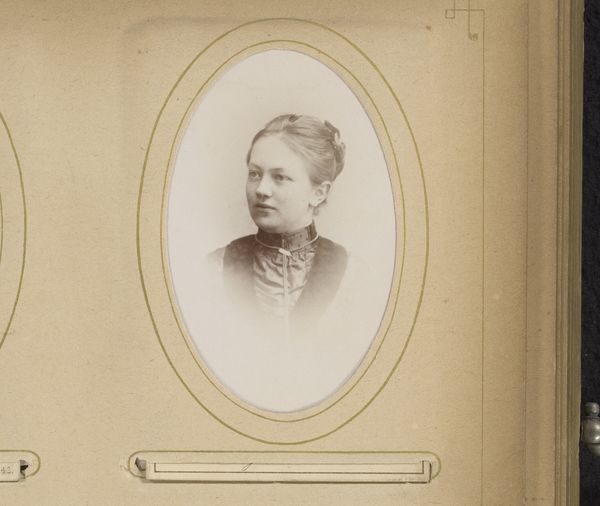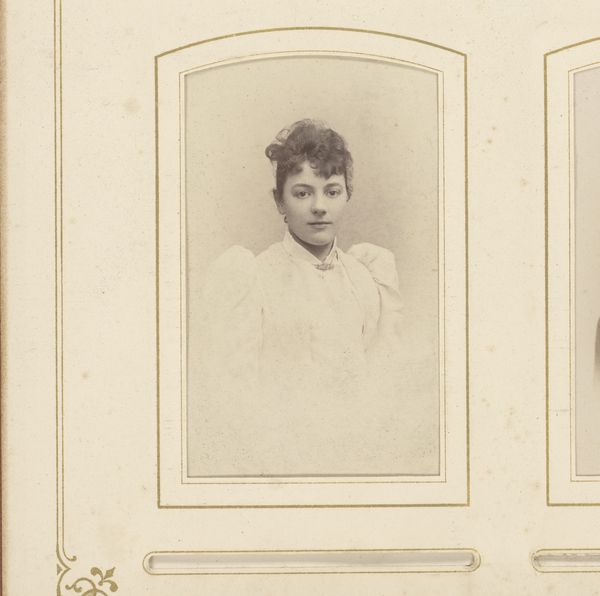
Dimensions: height 84 mm, width 53 mm
Copyright: Rijks Museum: Open Domain
Curator: Immediately, I'm struck by the albumen print's ethereal quality. The woman almost seems to float in a soft haze. Editor: That's interesting. Before we get lost in aesthetics, let's situate this work. The "Portret van een vrouw met hoofddeksel," or "Portrait of a Woman with Head Covering," by W. Hoffert, produced sometime between 1850 and 1900. Considering that timeframe, we must think about photography's place in representing women during immense social change. Curator: Absolutely. The soft focus contributes to that sense of detachment. Notice how the light sculpts her face. And consider how carefully she's adorned with a fur stole and ornate hat. Each element contributes to an idealized vision, reflecting beauty standards and the social pressures placed on women. Editor: The adornment certainly signifies status and wealth. During this period, wearing such items could indicate a specific class position and adherence to certain norms. Looking closer, what stories are hidden beneath the layers of societal expectation? The fur stole alone could have several interpretations relating to her autonomy or vulnerability. Curator: Indeed, those visual codes are present, however the execution presents a slightly blurred picture. It leans heavily on sentimentality but with technical awareness. The play of light, and its arrangement are what ultimately bring character to an otherwise subdued image. Editor: It is hard to tell what it tells us about femininity or domesticity during that era. What's absent can be just as powerful, for example, whether the woman held wealth within her family line as well as a choice about where her energy or skills may have lied. Curator: The absence of sharper details allows for projection. Our gaze lingers, interpreting the contours. We assign character, motivation. The formal qualities provide a scaffolding for this. Editor: So true. To understand such artifacts better requires continual conversations from a more expansive intersectional point of view, so future generations can better understand gendered socioeconomic norms through the historical lens. Curator: Yes, the artistry resides in inviting the viewer into this interpretative process, isn't it? This artwork presents the image that one is able to discern.
Comments
No comments
Be the first to comment and join the conversation on the ultimate creative platform.

